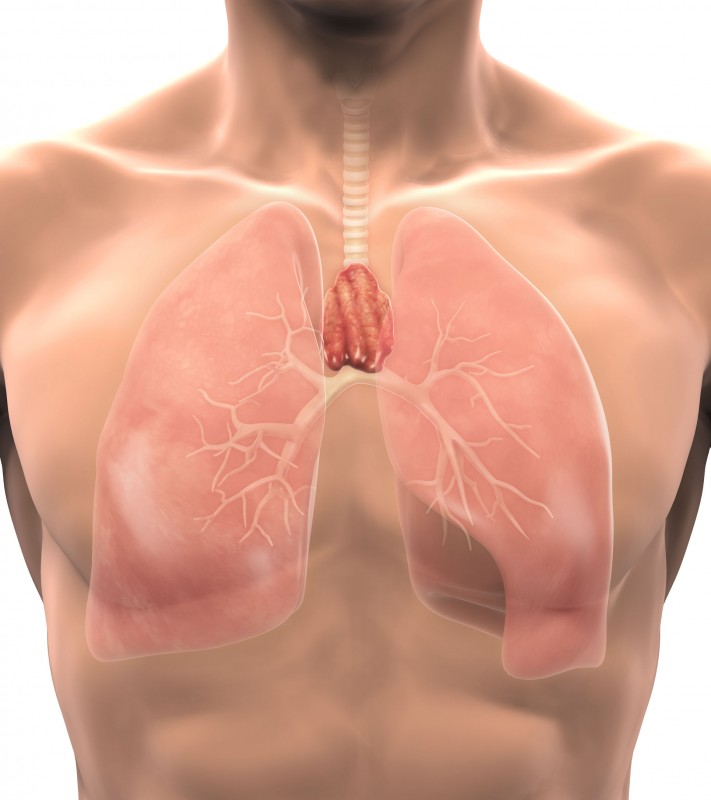
It’s pretty accepted in the training field that the General Adaptation Syndrome (GAS) is the central theory behind how one adapts to training, and should be considered when devising a plan to get stronger. However, in recent years, a bit of a stance has been taken against GAS. Some have come to believe that there isn’t enough science backing its role as the central theory behind periodized resistance training.
RECENT: Does Muscle Turn into Fat?
As a scientist who studies the fundamental basis of how muscles get bigger and repair in response to stress, and as a lifter who has always cared a bunch about programming, I find this debate pretty interesting. And, since much of this academic back and forth isn’t available to those of you without institutional access to scientific journals, I thought I would summarize both sides of the discussion and share my thoughts from experiences both in the lab and in the gym.
The Background on General Adaptation Syndrome
In 1936, Hans Selye introduced the general adaptation syndrome (GAS)1. GAS describes the process of how an organism adapts when it is exposed to an “acute, damaging” stimulus. According to Selye, damaging agents were stimuli like excessive muscular exercise, cold shock, or sub-lethal drug doses (adrenaline, morphine, etc.). GAS is broken down into three stages (alarm, resistance, exhaustion), and these three stages are believed to occur in response to any damaging stimulus. The alarm stage occurs six to 48 hours after initial injury, and according to Selye is marked by rapid decreases in thymus size and muscle tone. The second state, the resistance stage, occurs 48 hours post-injury and is marked by enlarged adrenals and the dissipation of edema that developed in the alarm stage. Selye believed (and showed) that if small doses of damaging stimuli were to persist, the injured organism would build up a resistance to the stimulus, and their organs' appearance and function would return to normal. Only after an exhaustive, chronic period of stimulation would the third phase develop. In the exhaustive phase, animals would lose their resistance to damage and redevelop symptoms observed in the alarm stage.
It’s important to note that in these early experiments, exposure to stressors was assessed by measuring the weight of the thymus2. And, before you start thinking, “What the heck does this have to do with lifting weights,” stop and listen to his rationale. Selye assessed thymus weight because the thymus’s weight fluctuates, in a very sensitive way, to damaging stimuli. Thus, he rationalized it was the most objective indicator of whether an organism was stressed or resisting stress. He in no way, shape, or form was trying to say that by measuring thymus weight you could better understand how to periodize resistance training. He was just looking for an overall way to measure stress and resistance. GAS wasn’t made up to be this classical basis for periodization. Instead, periodization adapted the model because that’s basically what periodization is: organizing training so you can adapt to stressors and elicit a specific response.

Photo credit: nerthuz © 123rf.com
For those that argue that looking at the thymus has no relation to understanding stress and training, more of a literature review might be needed. First off, the thymus makes and mediates a bunch of the body’s immune response, which is required for muscles to regenerate and grow. And, in response to acute-exhaustive exercise, Selye observed the same changes he saw in response to toxin exposure. This means that in response to acute, exhaustive exercise (alarm stage) he saw a reduction in thymus weight. However, when he pretreated the mice with exercise before the exhaustive bout (AKA a daily, linear increase in total run volume), he observed that there was no decrease in thymus weight following an acute, exhaustive, bout (in fact, there was a slight increase). So why am I bothering you with all these details? Because I want you to understand how these studies lead to GAS’s influence on the development of periodized training.
In brief: Hans Selye developed a universal model for the stress response known as the general adaptation syndrome. This three-stage process includes the alarm stage, the resistance stage, and the exhaustion stage. He showed that when one is gradually exposed to increasing doses of alarming stimuli (like exercise), resistance is raised to the point that stress can be resisted (as indicated by no change in thymus weight).
How did GAS become the framework of periodization?
In 1979, John Garhammer wrote an article in Track Technique called “Periodization of Strength Training for Athletes.” Here, he introduced to the training world GAS, as it related to programming and periodization3. In this work, he depicted what it is like for a trainee to go through each stage. More specifically, in the alarm stage, this indicates an acute drop in performance due to soreness or stiffness at the beginning of a new program. From a more cellular level, it's the initial stages following training where the damage is activating an immune and myogenic response. In the resistance phase, a combination of biomechanical, biochemical, anabolic, and molecular changes occur that ultimately lead to sought-after adaptations to training that promotes increases in performance. In the final stage of exhaustion, for a trainee, this signifies a time when training stress is too great, adaptations no longer occur, and overtraining results.
Honestly, to me, the application of GAS as the framework for periodization is logical, as the main purpose of periodization is to utilize basic principles of training (frequency, duration, intensity, variation, specificity) to elicit specific adaptations that enhance performance without eliciting overtraining. So why not lean on the model of how an organism adapts to stress to design ways to make athletes resist and adapt to the stress of training without actually overtraining? And, based on how the field has adopted the model, I guess they felt this way too.
In brief: In order to enhance the programming of athletes’ training, the fundamentals of GAS were extrapolated to develop periodized programs. It was adopted because the thought by understanding the stages of responding the training and stress, and then planning accordingly, one could optimize their training plan.
General Adaptation Syndrome: A Case for It
For years, and currently, it's been accepted that GAS serves as a mechanistic model for the conceptualization of training periodization. This means that many people believe periodization should be implemented as a way to optimize training stress, because they believe that in response to training, one goes through the stages of alarm, resistance, and—if not sufficiently rested—exhaustion. Those in support of this model understand that Selye’s initial experiments measured thymus weight as a surrogate measure of the ability to resist stress, and have adopted the thought process that comes with Selye’s later work which mentions that GAS is not a single set of symptoms, but rather a group of symptoms which occur, and can vary, depending on the stimuli one is subjected to4, 5.
Selye’s findings that stress-reactions are only tolerated well for short periods of time—but that with chronic exposure they can be detrimental—was the first evidence suggesting that there are benefits from periodically withdrawing from stress6. The combination of this finding and the three stages of GAS are believed to be the framework needed to plan training variation and rest and support its application as the framework for training periodization. While the support behind this is somewhat lacking, there is work demonstrating that there is a relationship between training load, performance, and wellness, as well as a negative effect from sustaining high training loads for longer time periods. Yes, more controlled experiments in mice or humans could (and should) be done to support the application of this model. However, that doesn’t mean that all of the information from coaches and athletes who have transitioned from a non-periodized to a periodized approach should be ignored.
In brief: Programming is the design and implementation of various loading schemes, and periodization is the “sequential development of fitness characteristics.” In most sports today, even those like bodybuilding and weightlifting, various traits need to be developed. And as such, for those that have adapted GAS as the framework for periodization, it is believed that a periodized approach that varies the volume and the development of fitness traits is needed so that one can adapt and prevent exhaustion.
General Adaptation Syndrome: A Case Against It
In the past year, there has been a bunch of back and forth about how relevant the application Selye’s work is to the planning or organization of training4, 7. Most specifically, some researchers have come to question if there is sufficient evidence to support the notion that periodized training is superior to non-periodized methods. For those that question the application of GAS to current training and adaption, they believe that a bout of lifting isn’t sufficient to initiate an alarm response. However, if you remember, Selye demonstrated that in response to a stress-inducing bout of exercise, thymus weight decreases. We also know that an immune response does occurs during the time frame of the alarm stage following training and that this response is required for muscles to adapt and repair following exercise-induced injury. That being said, limited research in the area has led some to believe that GAS does not occur in response to exercise.
Thus, the largest issue raised by those who refute the relevance of GAS is that the rationale for its application to periodization is not supported by the current literature. More specifically, this belief is accompanied by the stance that no experimental evidence exists to demonstrate that periodization is necessary to avoid overtraining. Furthermore, some believe that there is insufficient evidence to support the variation of training variables in advanced athletes, and that additional work is needed to understand how the stress response to different stimuli applies to human training. However, by tossing aside the scientific discoveries made in other organisms like mice, I think that means a lot of information lost in regards to how organisms react to stress in the most simplistic sense. Additionally, those making a case against GAS take issue with the fact that current periodization studies aiming to understand optimal training methods for increasing strength and muscle size and too far removed from the original meaning of periodization and the concept of GAS.
In brief: Some people don’t believe GAS should serve as the framework for periodization. They think that the Selye’s findings about the universal stress response cannot be extrapolated to resistance training, and that insufficient evidence exists to support that GAS exists in a resistance-training context.
Summary
Overall, some have come to question GAS’s application to periodization, because they believe that the work and model created by Hans Selye cannot be extrapolated to how normal humans adapt to exercise and training. They believe the stages of alarm, resist, and exhaustion do not occur in response to resistance training, ultimately questioning the need to periodize training. On the other hand, those in support of using the model believe that those against it have derived their opinions from an incomplete understanding of Selye’s work and an incorrect definition of periodization. They fully support that, in response to training, functional changes observed during resistance and adaption occur, and reason that work investigating the various adaptions to specific training stimuli during different time points supports this rationale. As a scientist, I can tell you that the references that refute the application of GAS in the context of resistance training are not just lacking but mostly limited to non-research articles (AKA reviews and commentary). With the amount of debate raised on the topic, I believe a study should be designed to address what's believed to be areas of concern in the context of the model's applicability.
READ: Overview of Periodization Methods for Resistance Training
While I can’t speak to any unpublished data in humans, I can speak to some unpublished data in mice and my own personal training experiences. In the lab, our group has found that in muscle, responses to different types of damage that require reparative growth initiate an essential alarm phase. If the exposure to stressors is excessive, the response is impaired, and muscles fail to undergo reparative growth. We have found that mice can reach and maintain resistance for over a month when subjected to daily exercise of progressive increases in speed and duration. That being said, without sufficient recovery, we have observed that they eventually reach overtraining when the exercise speed, duration, and frequency (twice daily) become too great.
In the gym, I’ve also found that the absence of a periodized training plan affects my strength progress. I hate to admit it, but recently there was a time where I was just lifting for stress relief, completely off any type of periodization. I was just auto-regulating and training nearly every day. As such, my strength adaptations slowed and became stagnant. A few months ago, I returned to periodizing my training, mainly because my training partner decided he wanted to get stronger. Since then my deadlift has gone up 30 pounds. So for me, practically, I know it makes a difference.
At the end of the day, there will always be a need for a more rigorous scientific investigation and hands-on data collection. I feel that the extrapolation of the GAS to the periodization of training is logical, and primary scientific evidence has yet to be presented to refute the use of GAS as the framework of periodized training. However, because evidence refuting it is lacking, I also believe more studies need to be done looking at the application of GAS in the context of human exercise and programming.
References
- Selye, H. A Syndrome produced by Diverse Nocuous Agents. Nature, 32 (1936).
- Selye, H. Experimental Evidence Supporting the Conception of "Adaptation Energy". The American journal of physiology 123, 758-765 (1938).
- Garhammer, J. Periodization of Strength Training for Athletes. Track Technique, 2398-2399 (1979).
- Cunanan, A.J. et al. Authors' Reply to Buckner et al.: 'Comment on: "The General Adaptation Syndrome: A Foundation for the Concept of Periodization". Sports medicine (2018).
- Cunanan, A.J. et al. The General Adaptation Syndrome: A Foundation for the Concept of Periodization. Sports medicine (2018).
- Selye, H. Stress and the general adaptation syndrome. British medical journal 1, 1383-1392 (1950).
- Buckner, S.L. et al. The General Adaptation Syndrome: Potential misapplications to resistance exercise. Journal of science and medicine in sport 20, 1015-1017 (2017).












1 Comment